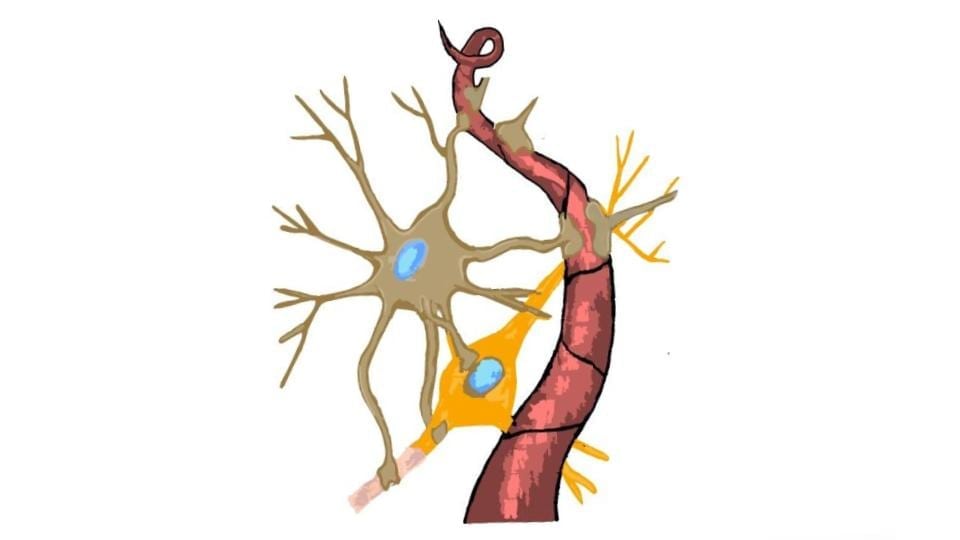Guest post by summer intern, Kelley Traller. Artwork by Kelley as well!
My name is Kelley Traller, and I am an intern here at cc-TDI. For the past 6 weeks, I have been researching DIPG, a rare pediatric glioma found in the brainstem. When I first started my internship I knew nothing about this rare form of cancer, and I wanted to change that. Right away I dove into research, searching through review papers and closely examining the anatomy of the brain. The more I studied DIPG, the more I started to learn about the brain as well.
 What I learned fascinated me. The brain is filled with glial cells- Neurons, Astrocytes, Oligodendrocytes and much more. Each cell has its own role, its own function to the brain. Some send signals and relay messages, some protect the brain from intruders, and others just serve as scaffolding that makes up the extracellular space in the central nervous system. My own brain, now bursting with information, led me to take detailed notes on what I was discovering. Notes turned into simple sketches, sketches turned into drawings, and suddenly my notes were filled with pictures. Neurons, blood vessels, and histones wound by long strands of DNA stretched from each page. Being a visual learner, I learn best by seeing and doing. Drawing what I learn has helped open up my mind to new ideas, just as art allows me to express myself. Never would I have thought art and science could suddenly become one.
What I learned fascinated me. The brain is filled with glial cells- Neurons, Astrocytes, Oligodendrocytes and much more. Each cell has its own role, its own function to the brain. Some send signals and relay messages, some protect the brain from intruders, and others just serve as scaffolding that makes up the extracellular space in the central nervous system. My own brain, now bursting with information, led me to take detailed notes on what I was discovering. Notes turned into simple sketches, sketches turned into drawings, and suddenly my notes were filled with pictures. Neurons, blood vessels, and histones wound by long strands of DNA stretched from each page. Being a visual learner, I learn best by seeing and doing. Drawing what I learn has helped open up my mind to new ideas, just as art allows me to express myself. Never would I have thought art and science could suddenly become one.
Of course, I am not the first to experience this amalgam of two seemingly different subjects. I recently discovered Santiago Ramon y Cajal, a Spanish neuroscientist and pathologist of the 18-1900s. His investigation of the anatomy of the brain made him a pioneer in neuroscience, and his groundbreaking work eventually won him a Nobel prize. Nevertheless, Ramon y Cajal was more than a scientist, he was also an artist. His delicate, analytical drawings of neurons helped illustrate not only the complexity of the brain but the beauty that lies within our mind as well. Art is known as a means to express creativity and emotion, so what better to draw but the brain, the source of all our imagination?
Sometimes it seems as if all the corners of the earth have been searched, all discoveries about humanity already made. This could not be further from the truth. Beyond the human eye is a world of complexities we are still yet to identify. Perhaps the final frontier is really just the space inside all of us. These mysteries will continue to remain hidden beneath the surface, and I hope to someday uncover them- as soon as I can graduate high school!


